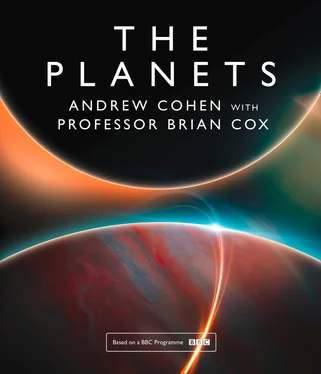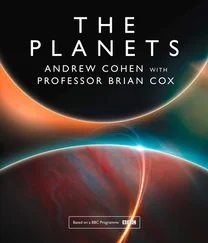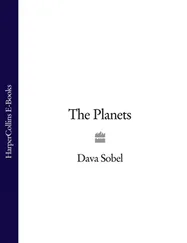But before any of this could happen, Messenger had to take perhaps the most circuitous route in the history of our exploration of the Solar System. Just passing close to Mercury to take a few snaps, as Mariner 10 did, is hard enough, but actually entering into its orbit was thought to be either too difficult to achieve or too costly to execute. As cosmochemist on the Messenger mission Larry Nittler explained, ‘There are two major challenges to getting a spacecraft into orbit around Mercury: gravity and money. When you go from Earth to Mercury, you’re falling into the gravitational well of the Sun, which makes you accelerate faster and faster as you get closer. And, if you were to go straight from Earth to Mercury, this means that you would basically just zip right by the planet, or you would need to bring an incredible amount of fuel to put the brakes on, more than you could actually afford.’
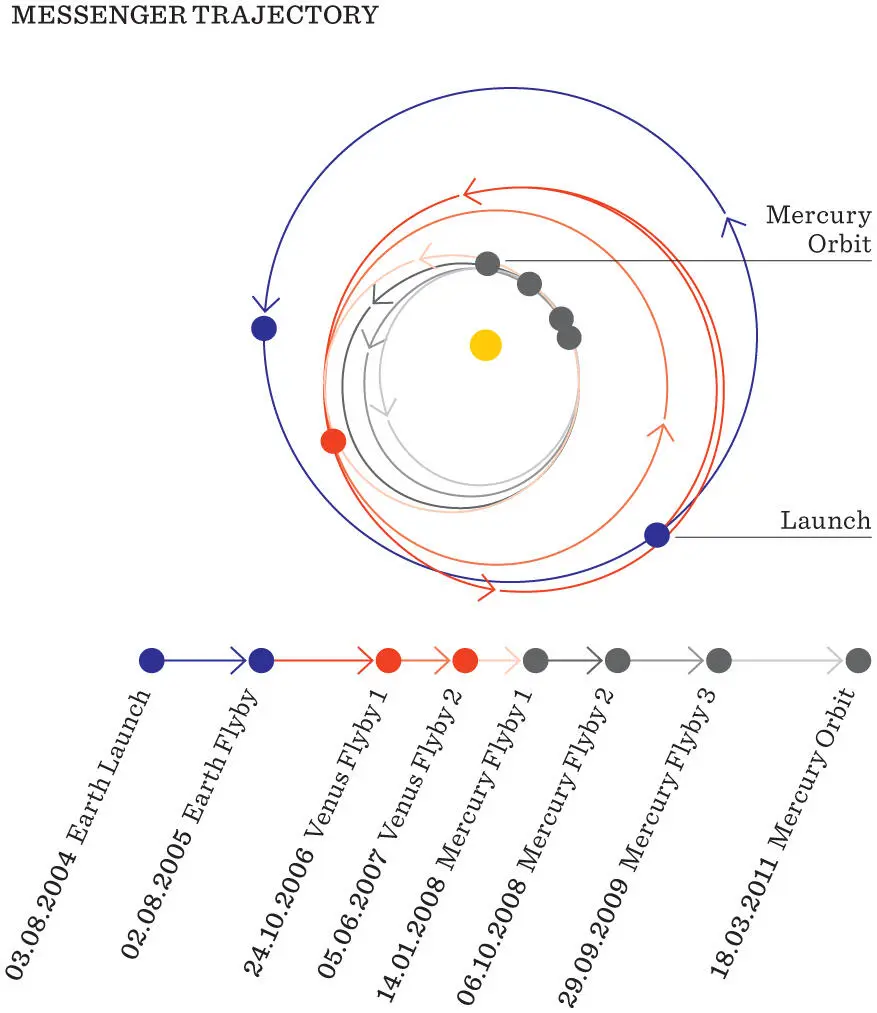
© HarperCollins
Messenger’s six-year, seven-month, 16-day journey to Mercury took it on a complex route involving several gravity assist manoeuvres before it entered the planet’s orbit.
A number of missions never made it further than pencil and paper, while others floundered and failed at the proposal stage. It was only when Chen-wan Yen, a NASA engineer from the Jet Propulsion Laboratory (JPL), provided a trajectory that could not only get a craft into orbit but could do it at an estimated bargain-bucket cost of 280 million dollars, that the Messenger mission could really begin to take flight.
Taking off from Cape Canaveral on 3 August 2004, Messenger began a six-year, seven-month, 16-day journey to Mercury that would take it on a 7.9-billion-kilometre trajectory before it entered into orbit around the smallest of all the planets. To arrive at Mercury with the right speed and on the right course would require a complex route that would entail a number of gravity-assist manoeuvres around the Earth, Venus and Mercury itself to reduce the speed of the craft relative to Mercury. So, combined with the brief firing of its large rocket engine to finally insert it into orbit, this mission profile allowed Messenger to complete its voyage without the need to carry the vast reserves of fuel required to slow its passage through the firing of rockets. This design made the craft lighter and cheaper, but ultimately much slower. Almost seven years was a long time to wait for the team patiently charting its progress across the stars. Larry Nittler described Messenger’s course as ‘sneaking up on [Mercury] by taking a seven-year journey, flying around the Sun many times, doing multiple flybys around Mercury and Venus, and each time transferring some of [the] craft’s speed and energy to the planet, so it could slow down, so that when we finally got to Mercury after seven years, we were able to fire our engine just a little bit, to slow down [even more] and get captured by the weak gravitational field of the planet’.
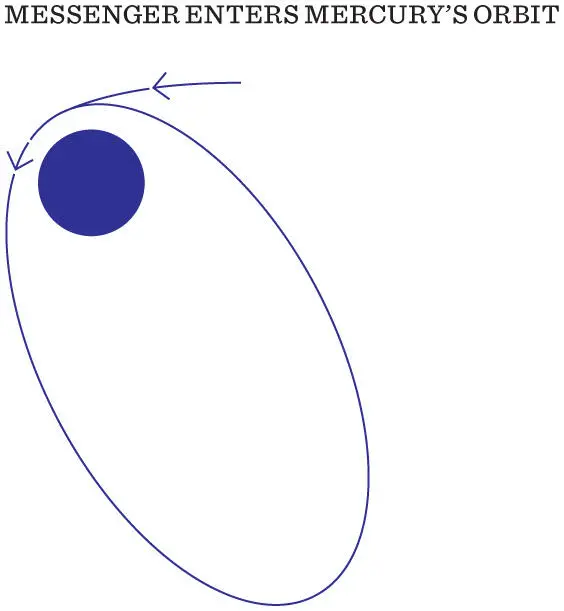
© HarperCollins
The highly elliptical path taken by Messenger to finally enter Mercury’s orbit at 00.45 UTC on 18 March 2011.
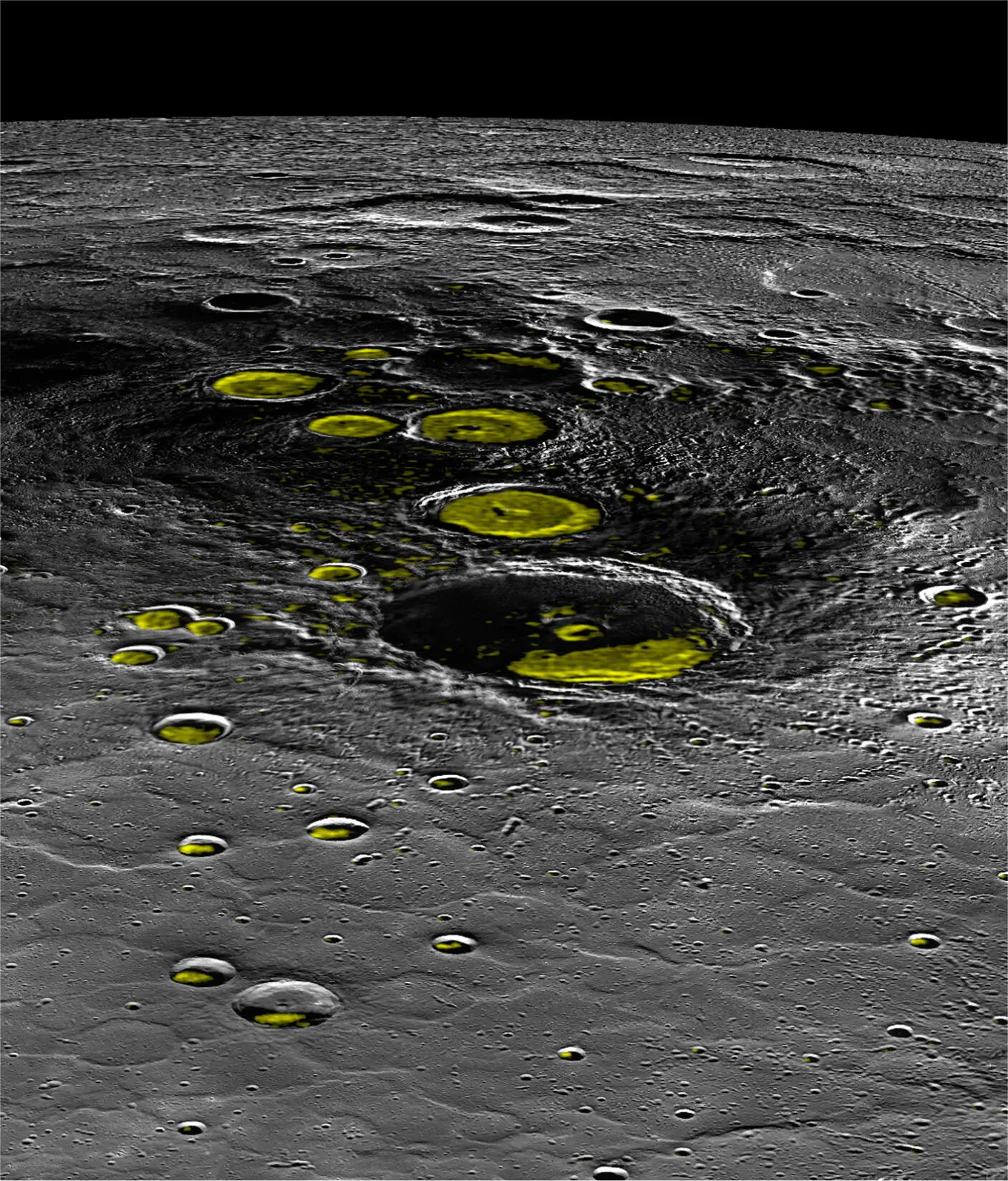
© NASA/Johns Hopkins University Applied Physics Laboratory/Carnegie Institution of Washington
Messenger’s mission was a deeper exploration of the cratered landscape and geology of Mercury. One major discovery from its imaging work was evidence of water ice in its polar craters.
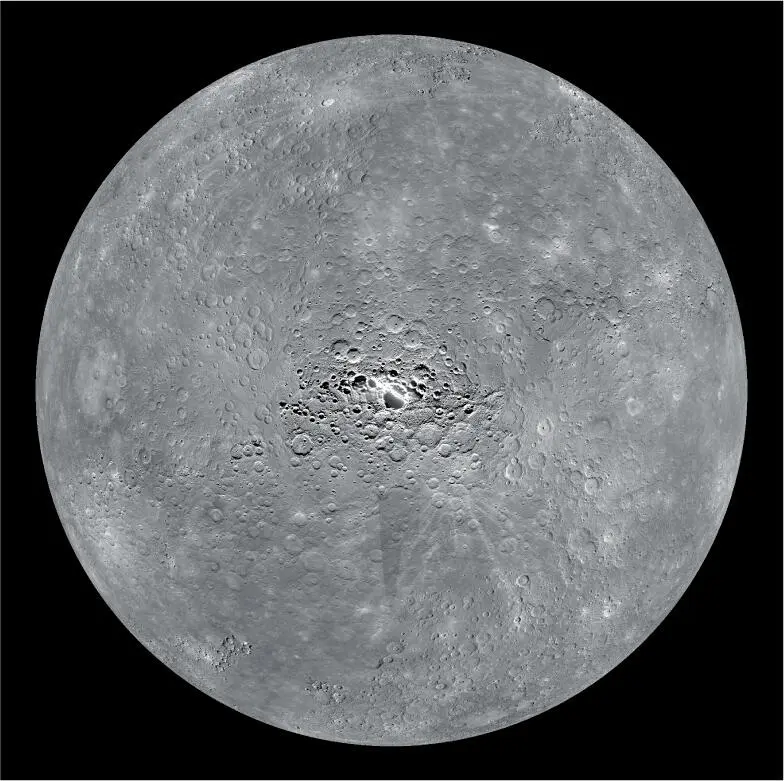
© NASA/Johns Hopkins University Applied Physics Laboratory/Carnegie Institution of Washington
Messenger took images of Mercury’s south pole on several orbits, allowing scientists to monitor the region through changing illumination.
Appropriately, when Messenger finally entered into Mercury’s orbit at 00.45 UTC on 18 March 2011, the path it settled into was highly elliptical. This orbit took it on a 12-hourly cycle from 200 kilometres above the planet’s surface to 10,000 kilometres away from it. It may seem like an odd orbit for a craft with the singular aim of getting as close to Mercury as possible, but this was an essential part of the design of the mission, vital to protect Messenger from the fierce heat radiated by the scorching hot surface of Mercury. The sunlight reflected from the surface is so powerful it would have literally melted the solder holding the spacecraft together if it wasn’t given time to cool down between its closest approaches to the planet.
Protected by an enormous ceramic solar shield and its eccentric orbit, Messenger could begin its work. For two years the spacecraft mapped pretty much every bit of the surface of Mercury, and the images beamed back to Earth revealed a planet that’s been in the firing line for billions of years. Too small to hold on to an atmosphere that might protect it from meteorites, and lacking any processes to recycle old terrain, Mercury’s ancient surface is the most cratered place in the Solar System.

© NASA/JPL
This computer photomosaic of Mercury’s southern hemisphere was created from images taken by Mariner 10 on its flyby of Mercury, giving scientists a tantalising glimpse of this elusive planet.
Cosmochemist Larry Nittler explains the reason behind Messenger’s elliptical orbit
‘The way we addressed the problem of heat from the planet was to be in an extremely elliptical orbit, where we flew in very close over the North Pole, and took observations close to there, but then flew very far over the South Pole, like 10,000 kilometres. And so a couple of times a day we’d zoom in over the North Pole, get our data close, but the instruments would heat up, so then we’d fly and get different data farther out from the planet while we cooled, and in this way – heat up, cool down – we kept everything below the danger temperatures where instruments could be damaged.’
MAPPING MERCURY
The Mariner 10 mission had enabled scientists to see about half of the planet, so the first full view of the terrain of Mercury came from the flybys of Messenger. As planetary scientist Nancy Chabot explains, ‘Before Messenger, we had only seen 45 per cent of the planet and we saw some stuff during the flybys before we went into orbit, but after orbiting the planet we have now mapped 100 per cent of the planet and seen nearly everywhere. There are some permanently shadowed regions which are still mysterious … but after mapping the full planet, we have a good idea of what the surface looks like and craters are absolutely a dominant land form. This planet has been sitting there for billions of years and been hit over and over, and it hasn’t had a lot of processes to destroy those craters.’
‘Scars are just another kind of memory.’
M.L. Stedman
Amongst the thousands upon thousands of craters on Mercury, the largest by far is Caloris Planitia, a lowland basin 1,525 kilometres in diameter that is thought to have formed in the early years of the Solar System, around 3.9 billion years ago. It was first spotted as Mariner 10 sped past in 1974, but due to the trajectory and timing of the craft only half of it was lit, so the full character of this crater remained a mystery for another 30 years until Messenger could photograph it in all of its glory. Taking one of its very first photos, Messenger revealed Caloris to be bigger than had been previously estimated, encircled by a range of mountains rising 2 kilometres from the Mercurian surface, whose peaks create a 1,000-kilometre boundary around the lava plains within.
Читать дальше
